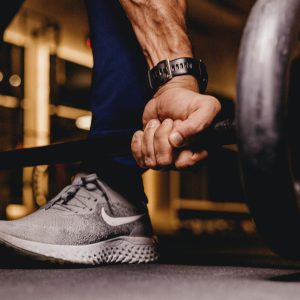Calves used to be the bugbear of bodybuilders all over the world, this changed with the introduction of the standing calf machine enabled bodybuilders to use very heavy poundage’s each leg work out that the lower legs really started to blossom. Today we also have the seated calf machine and the leg press apparatus to help keep the calves growing, so it is no longer considered “impossible” to develop the calf muscle to any great degree.
There are many ways to achieve calf size and definition, individuals will structure their workouts in a manner which suits them, an example on how to remodel the calf can be performed on a daily basis, with ever increasing weight loads on a standing calf machine. If you are unable to use the calf machine, then consider performing donkey calf
raises with two heavy training partners sitting across your back.
Way back in the last century when men wore tights, it was common practise for men to wear false calves, just as today we wear jackets fitted with shoulder pads to give the visual appearance of added width. To get the best from your calves, it is recommended to spend at least twenty minutes each workout stretching your calves. This can be
done by standing on a high block without any weights, stretching as high as you can, and then lowering down to maximize the effect. By this stage you should only be interested in getting full and complete stretching action. Later in the workout, you can train the lower legs with resistance exercise (calf machines) and follows the traditional pattern of working them with about 5 sets of 15 to 20 reps.
The following are specific calf exercise which should be seriously considered when developing well defines calves. The Donkey Calf Raise, there is no doubt that the bent over position one adopts for the donkey calf raise exercise does something very special for the lower legs. This exercise is a great favourite of many Mr. Olympia contestants. Lean on a bench or table top so that your upper body is comfortably supported parallel to the floor. Have a training partner sit on your lower back, over the hip area. Rise up and down on your toes until you cannot perform another rep. Use a 4 – inch block under
your toes to give greater range to the foot movement. You should always aim to perform at least 20 reps in this exercise.
The Standing calf raise, it is important that calf machine you use is capable of loading on heavy weights. The apparatus should either carry a huge stack of weights or else be set up with a leverage benefit, so that comparatively small weights give a considerably increased overall load. Rise up and down on your toes without excessive knee bending and without bouncing at the bottom of the movement. Finally there is the Seated calf raise; this exercise too, is performed on a special leverage machine. The principal muscle worked in this movement is the soleus rather than the gastrocnemius. Perform as many heel raises as you can, concentrating on maximising total calf stretch with each
repetition.
For more information, please visit the Smart Physical Workout website, although often neglected, the well-developed calf is an overlooked asset.










